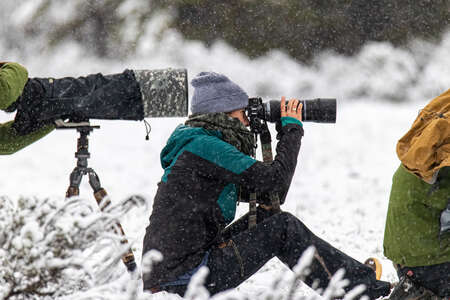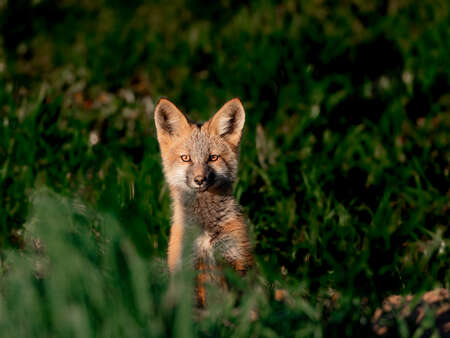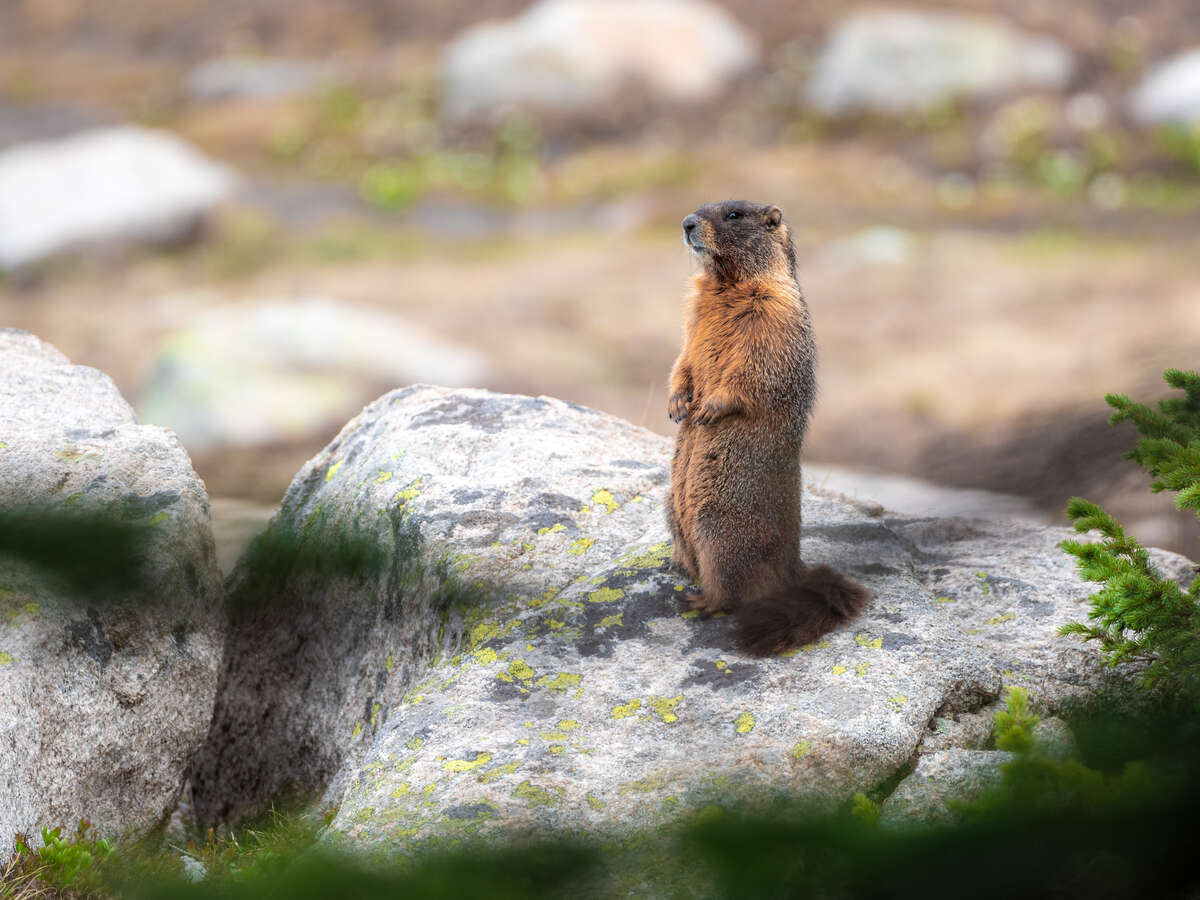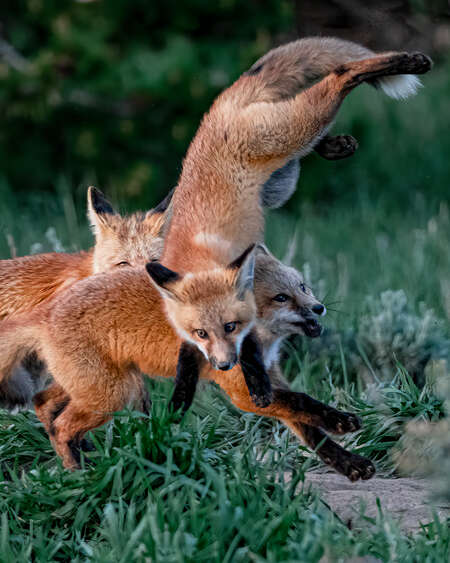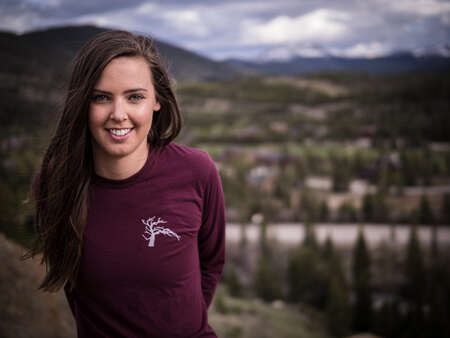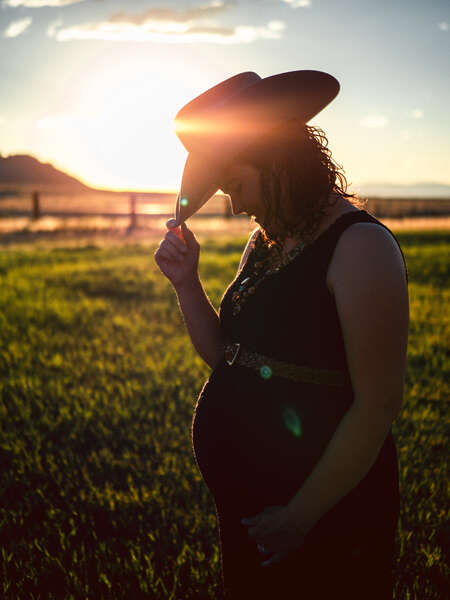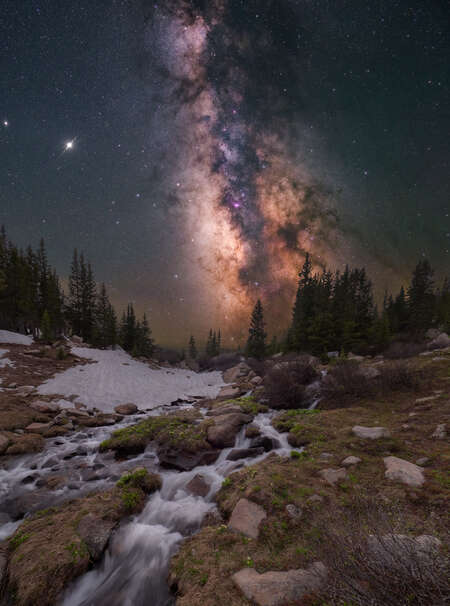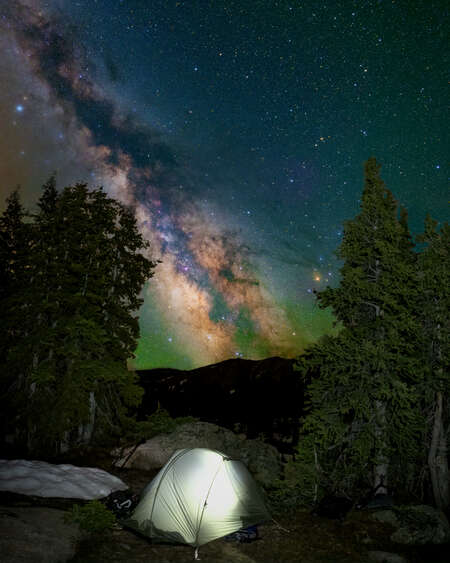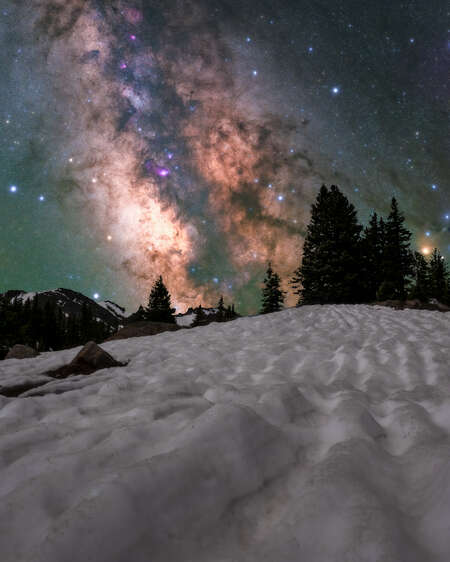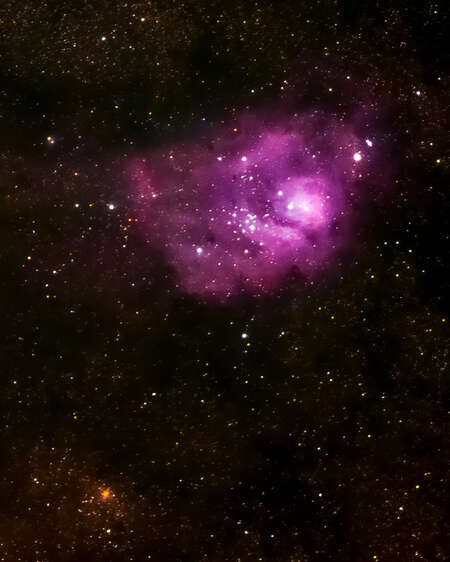I've been a passionate photographer for the better part of my life. I picked it up as a high school elective class and never have put my camera down since. Gear has always been important to me. My first real camera was a 6-megapixel APS-C my dad bought for me from Walmart. Moving through high school, I decided I wanted to focus my photography on photojournalism; I thought that would be a fun way to make a living with my camera. So, I picked up and financed for myself a professional body.
Fast forward a decade and I saw a few posts on my friend's Instagram of the Milky Way from his trip to Moab. I had photographed the stars before but never in any sort of a serious way. I thought to myself “I can do that." So, I went out to a reservoir just North of town with my camera and got my first proper picture of the Milky Way. The path of my photography immediately changed.
At this point I became something of a gear snob. I only wanted to shoot with prime lenses that were super-fast with perfect corner sharpness on full frame cameras, anything less than that I thought would be unacceptable. So, for years I stuck with it and got some great results. And I thought I was happy with this set up until I made a new friend. A young lady photographer with a wild eye for nature and a passion like I had not met before. You guys might already know her, her name is Brooke Bartleson.
Before meeting her I always thought that wildlife photography was kind of old fashioned. I also thought that a great wildlife image required a $13,000 lens. Brooke’s interpretation of wildlife photography breaks the mold of everything you would consider to be traditional. She showed me that you can capture intimate portraits of wildlife, and show them in a way that a lot of other people don't. At the time we were shooting on the same full frame camera, but she had a big, heavy telephoto lens that let her reach out to grab those shots. And she was creating some amazing work. So, when she decided to try out a camera system that had a micro 4/3rds sensor I thought she must be crazy! There is no way that tiny sensor could create detailed and beautiful images like my proper full frame camera.
How wrong I was.
I saw an immediate change in her work. A change in detail, tone and even composition. And it seemed like she was getting a higher number of "keeper" shots every time she went out. But I was still skeptical. I'm an astrophotographer, and we need giant sensors to create low noise images in low light situations. Right?
It wasn't until we took a trip up to the Tetons to photograph the bears on a snowy weekend that I realized the full advantages of the Olympus camera system. I watched all these photographers carrying around their 600-millimeter primes on their tripods and being controlled by their gear rather than by the situation and the wildlife. Brooke was able to move freely and control her camera with ease, her experience was completely different from everyone else’s. And the quality of her images was fantastic!
Intrigued yet skeptical, I talked to Brooke about how I might be able to test out Olympus and was given the opportunity to borrow some gear. I knew how great the Olympus system was for wildlife photography, there was enough evidence of that. I was yet unsure about how it would handle low light situations and astrophotography. When I first picked up the gear it was a full moon, so I decided to head out and do my best to photograph some wildlife, and see if this gear is as good as they say!
I ended up having a pretty great wildlife experience my first day out. I was shooting with the OM-D E-M1X and 300mm F4.0 IS PRO. I also had the MC-20 2X teleconverter at my disposal.
I found foxes, osprey, and a bald eagle family. I shot in some harsh midday sunlight, so the photos aren't the greatest, but the shooting experience definitely was. I love how the camera functions. The electronic viewfinder made nailing my exposure easy and the focus tracking made composing my subject and following the kit foxes around as they played super easy.
I was amazed that I could just put my focusing box on my subject and then move the camera around and the camera locked focus, it tracked my subject better than I ever could have. Within the first few hours of using the gear I knew that my photography future had changed yet again.
Most of these features I've mentioned so far are available on the majority of modern mirrorless cameras, so is there anything really special about Olympus? Are there any features they could take me away from full frame? Yes.
After joining some Facebook groups and consulting with some Olympus pros, they told me about a few features that I had to try, one was the Pro Capture Mode for wildlife. This mode ensures that you never miss a critical moment when photographing subjects that move unpredictably.
I went to test this out with the kit foxes who are getting old enough to be super rambunctious. At times, just getting them in the frame is challenging let alone capturing the perfect moment during their play. I'm fairly certain that the image you see here would not have been captured if I was using my old gear.
So yes, Olympus cameras and lenses are great for wildlife. But I make the majority of my photography income from astro landscape photos and portraits. The moon still being too full to properly test it at night, I decided to call up a model I had worked with before to see how well this camera does photographing people.
I decided to test the 25mm F1.2 and the 7-14mm F2.8. I was curious about the eye autofocus and whether the F1.2 lens was wide enough to properly blow out the background on the MFT sensor.
It worked. The eye tracking worked; the background blur worked. The entire shooting process was efficient and easy. Again, thinking about the electronic viewfinder and the continuous AF tracking helped me to free up my brain to be more creative and focus on my composition. And I was again blown away by the quality of the M.Zuiko PRO glass.
So - can the Olympus system do wildlife? Yep. Portraits? Yep. Now time to see if it has night vision!
Still doubting the abilities of this sensor, I took my star tracker, OM-D E-M1 Mark III and the 17mm F1.2 PRO out to my best go to spot up on Loveland pass. The first thing I wanted to test was Starry Sky AF. I’ve become proficient at focusing lenses at night, there’s no way this little camera could do a better job that me!
Nope, wrong again! The Starry AF worked PERFECTLY. It was quick and accurate, and mind blowing! Again, another technical feature from Olympus that made my shooting process easier.
And I couldn’t wait to get home to pixel peep. The results? They were good… shockingly good!
Over the next few nights of testing I have realized that this camera can produce astro images that are worth being proud of, worth printing, worth selling. Could it really be? Could I actually want to make the switch from full frame to Olympus? I had 1 more thing to test…
I saw the benefits of mirrorless cameras. I saw the benefits of the size, weight, and portability of the Olympus system but I wasn't quite sold yet. It wasn't until I took this camera backpacking that I finally could make up my mind. I fit the E-M1 Mark III and 7-14mm, 17mm, 25mm, and 300mm lenses in a small camera bag that was convenient to carry in my backpack. Before this I always had to compromise.
Which lenses would I really want to bring with me into the back country? I would always bring a few but definitely not anything as long as 600 millimeters! This is a game changer! My wife and I hiked up to an alpine lake that sits right around tree line and I was able to bring the proper gear to capture the entire experience. From wildlife to landscape to astro, I literally had the gear to do it all and the weight was not even an inconvenience. I also got to try out new features like the Live ND Mode. This let me capture a smooth, silky waterfall during bright daylight without even needing to use a tripod!
I was even able to do some deep space astrophotography, capturing the Lagoon Nebula!
This trip sealed the deal. Is there a perfect camera system? No, there isn't, so we have to make certain compromises no matter what we choose. But for so many things, and for so many adventures, my Olympus gear will be coming with me.
Instagram: @chasing.luminance
Alex McGregor was born and raised in the heart of the Rocky Mountains. From a young age, he enjoyed outside activities and was captivated by the night sky. After realizing his love for photography, he joined the two and has focused on astrophotography ever since. Alex enjoys traveling and capturing the night sky in unique locations around the world. When he is not taking pictures, he enjoys free-diving, skiing and backpacking.
